LMP Asks #17: An interview with Frank Piesik
This month we talked with Frank Piesik, a musician, inventor and educator living in Bremen.
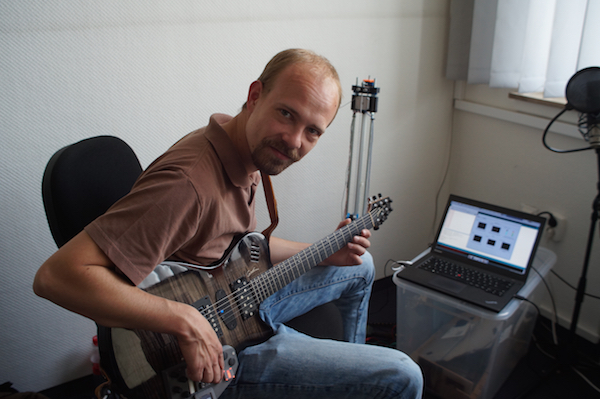
Hi Frank, thanks for talking with us! First, can you tell us a little about yourself?
Hi there and thanks for your interest in me and my work. I’m 33 years old and like to spent my time playing music and making things. Currently, I'm quite occupied being a father and becoming a teacher. My plan is to work part-time as a teacher to earn income while continuing to work on my projects. I like the idea of teaching children to make the things they imagine and to pass on some of the open-source values I believe in.
I live in Bremen, Germany in a nice cultural district called “Viertel”. I studied music and politics and have no official educational background in engineering or programming. I'm lucky to live at a time where I can find many resources to learn the stuff I like on the internet. I'm good with not being a professional engineer or music producer, because I like to make things the way I want to and not the way they sell the best. I'm a huge fan of the maker and open source cultures and their open tools like Arduino, Raspberry Pi, 3D-printing, etc.
What do you spend most of your time doing?
In the last years I have spent much time learning everything that enables me to realize my ideas: programming with Pure Data, Python, OpenScad (3D-modelling), tinkering with electronics (learning to use sensors and actuators with an Arduino or a Raspberry Pi), mechanics (building and using a 3d-printer and a CNC-Mill) and communication concepts (serial interface, bluetooth and other wireless modules, rtl-sdr (ham radio)). On my blog you can see some of the results that emerged along that way. I usually start a project when I have an idea or a certain desire and then suddenly see a possibility of how I might achieve it (e.g. if I connected an Arduino to my camera with a flash and some actuators, I could make great high speed photographs!) Then I become so excited that I have to go for it and solve the problems to achieve the desired end result. There is also one long term project which I have worked on for several years now called the Techtar, my proposal for a guitar synthesizer that has robotic elements similar the Pythagotron. (See question 4 below.) I'd say that exploring the possibilities of expanding musical expression through technology is one main driving force of what I do.
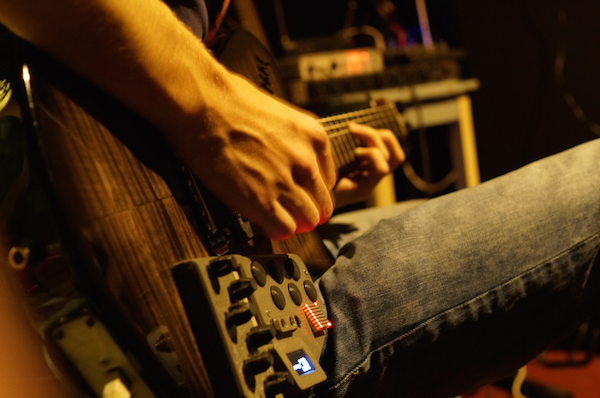
It seems like you are an avid user of Pure Data. Can you tell us how long you have been using PD, what you use it for, and what you like best about it?
Yes, I am. I used to use NI Reaktor a lot and I learned a lot about programming concepts through it. However, as I advanced I ran more and more into its limitations, not technical ones, but those that arise because it is closed source. For example, it's impossible to run Reaktor on a machine like raspberry Pi to make a little embedded unit. As I realized that everything I'll ever create with Reaktor will be tied to the rules (and licence) of NI, I decided that I had to go another route. And this route started with the open programming environment Pure Data (PD). At the beginning it was quite a rocky path as PD doesn't come with great sounding and ready-to-use patches like Reaktor does, but it turned out to be very rewarding as I have learned so much.
I really love PD for opening a new world to me: the unadorned world of concepts and data, instead of brands and hypes. I think that programming in PD is just easy enough for a beginner to get some rewarding results: it has a nice help system, you can right click on every object to open a working help patch to explore the characteristics of the object, and with the Gem library you can also do graphics. It's almost a full programming language and I have used it for most of my projects in the past, music-related or not. Once I found out how to make PD communicate with an Arduino through the comport object I thought: “Wow now I can really do everything” :) That said, I don’t think that PD is the best solution for every task. Its graphical paradigm has certain advantages especially for beginners, but the interface can also feel very clunky when you compare it to other workflows. If you look at what you can do with code the length of one Tweet in SuperCollider, it would take a hell of a lot of clicks to make an equivalent sound in PD. That’s why I’m now learning some other text-based programming languages like SuperCollider. However, I think PD will always be an important tool in my box.
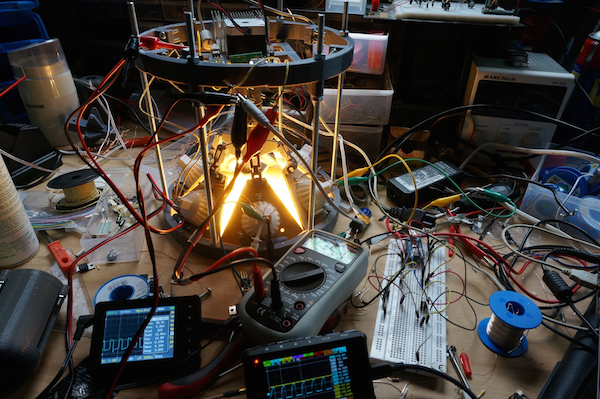
There are a number of projects on your website that feature microcomputers or microprocessors like the Raspberry Pi, Axoloti, and Arduino. Can you tell us how you got into microcomputing and what kind of projects you have done with them?
About four years ago I read about Arduinos and found them interesting so I ordered one. The moment I got the “blink-LED-example” working was a key event for me, I was just totally hooked. It was the first time that something I did in my computer had impact on the real world (other than put something on the display or making a sound). And it actually didn’t take too much time until I could build usable things with it. One of the first was an alarm clock, which wakes you with an air blower and a flashlight and could also be used as a reading light. I built it for my spouse and although it was only half finished when I gave it to her, she loved me for it. Since then I have used Arduinos for things like controlling a LED flash for making high speed photographs, hacking my e-bike to make it’s power control more intelligent and to control it with my smartphone, controlling an allround DC to DC regulator to handle my Solar panels, and making a lamp with focus control and three channel brightness control.
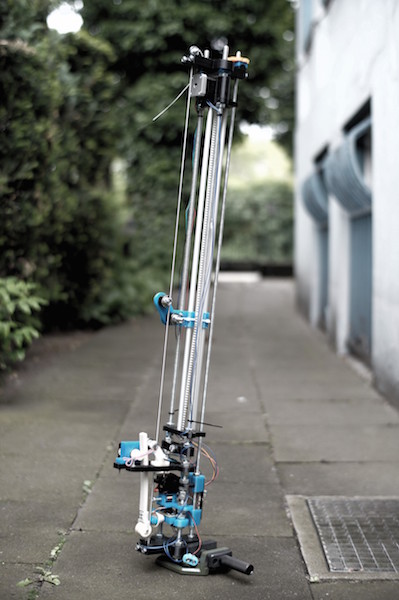
One of your projects that really blew me away was the Pythagotron. It is such a unique and involved project that we would love to have you write an article entirely dedicated to an exploration of the instrument. For now, though, can you just tell us what inspired you to make it and what it took to realize it?
The Pythagotron is a follow-up project to my Techtar. While the Techtar is a semi automated instrument, the Pythagotron is fully autonomous. The idea of building something like the Pythagotron came up in the context of forming a new band, featuring unique instruments and unusual ways of making sounds. Our bass player has a big effects-board and said that he wanted to experiment more with the sounds of the effects rather than being occupied playing repeating bass lines. The obvious solution for this would be a looper, but the Pythagotron is certainly more fun and has the advantage of being programmable (a sequence can be changed more easily than a loop). The goal of those electro-mechanical instruments is to combine the best of the two worlds of physical and virtual generated music.
In the digital domain we have total control of repeatability, precision, programmability, etc, but it takes a lot of effort to make a sound organic, unique and interactable. Those things are easily achieved in the physical world. With the Pythagotron I can play a digitally programmed sequence but every note will sound different than the note before. You can also interact with the sound as it is physically generated by the string by touching it with certain materials to make it sound different while it's playing. What it took to realize it? Well, that’s hard to tell in a compact way. I can say that it involves pretty much every technique I named above. It’s construction style is very similar to a RepRap Prusa MK2 3D-printer. There is some more information as well as a link to its Github repository on my blog. More details or maybe a guide on how to build it might indeed be better placed in a dedicated article.
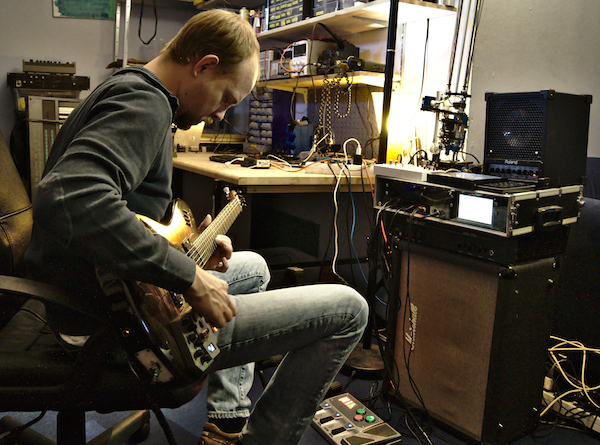
What are your projects for the near (or far) future?
Actually making more music is on the top of my list. That’s a dilemma when you build your own instruments -- there are always (at least) two solutions to make a better sound, in addition to practising or improving your instrument. The last few years I tended toward the latter, neglecting to play and create music. Next year I'll be quite busy becoming a teacher. In that role I spend a lot of time testing and programming music learning software on Raspberry Pi. My goal with that is to build a small, affordable music-playstation on which to learn and produce music. In the long term I'd like to continue building custom made instruments on a more professional level and to play some live music at interesting locations.
